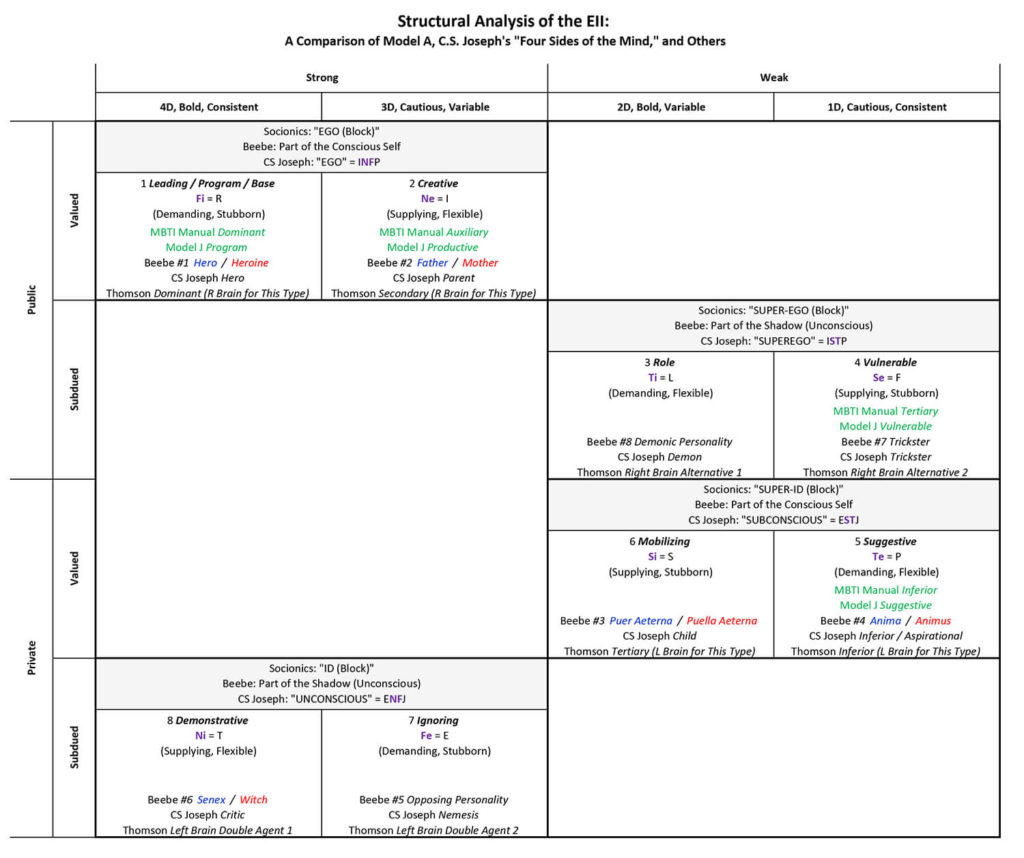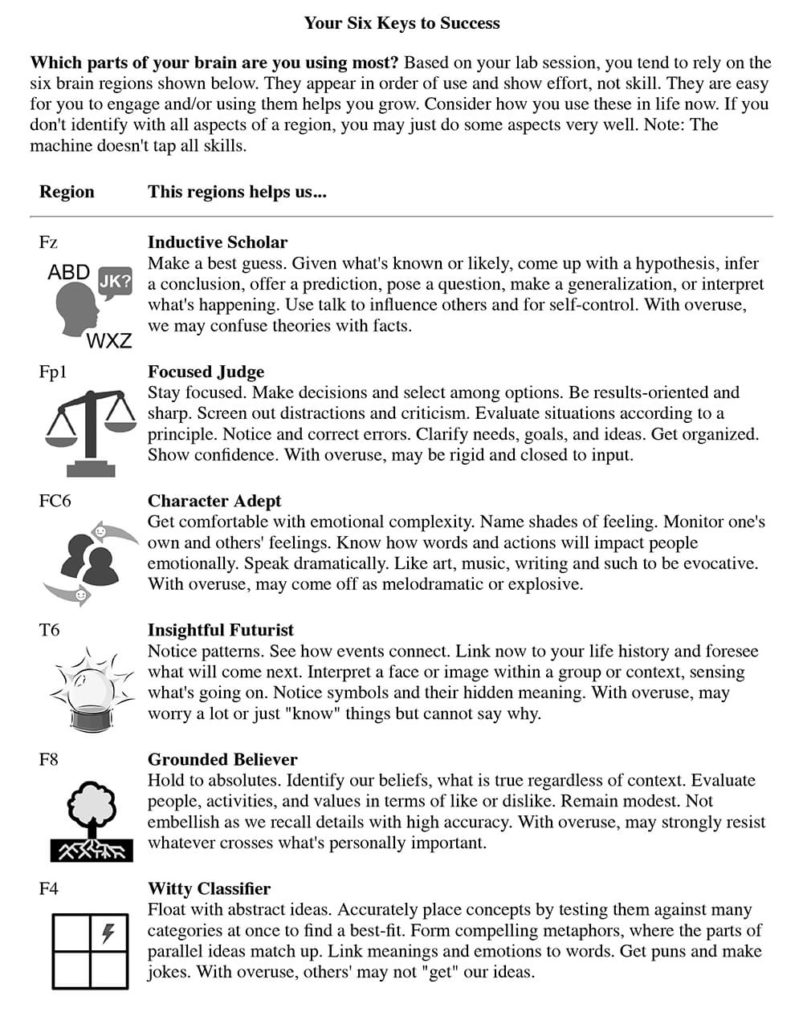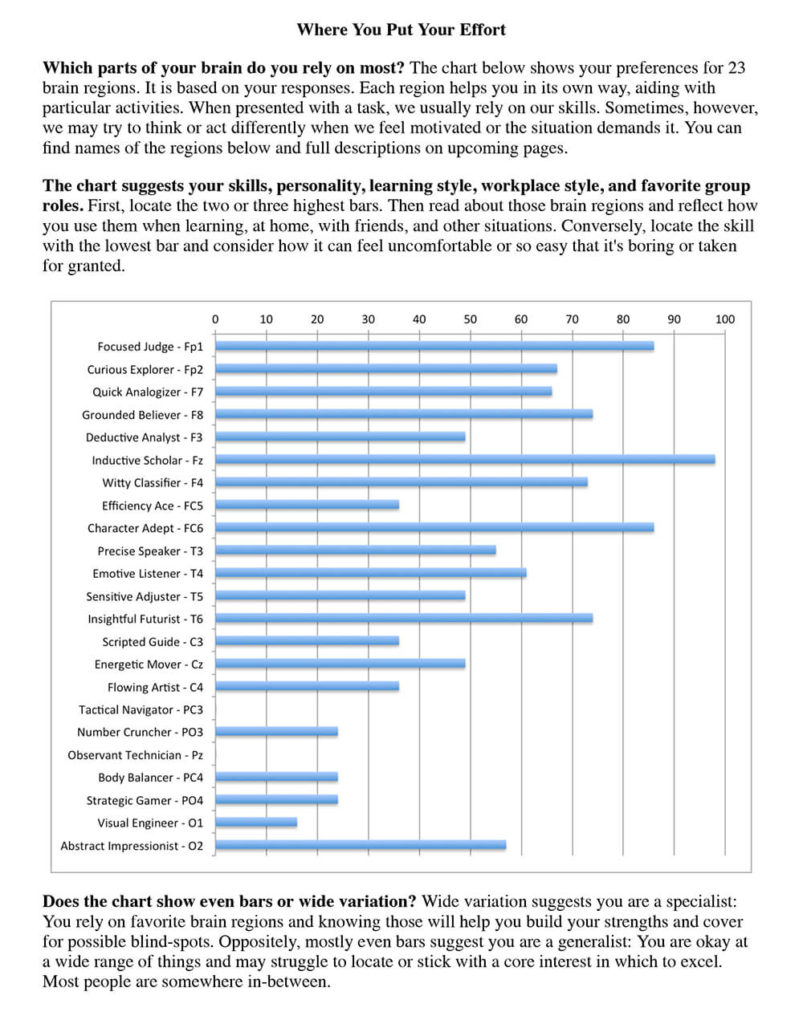Socionics: Surprise & Solution
Surprise
Near the end of December I received the follow-up report on my live interview with socionist Jack Oliver Aaron, and it was not at all what I expected. According to the report, I came across in the interview as an SLI (Sensory Logical Integrator), a type nicknamed “The Craftsman.” Since my MBTI type is INFJ and I always test strongly on cognitive functions related to intuition (Ni and Ne) and feeling (Fi and Fe), this result was a surprise. Granted, socionics defines its “information metabolism elements” differently than the MBTI community describes its cognitive functions; nevertheless, I was not expecting such a difference.
The report I received (slightly edited for the sake of privacy) can be accessed here.
My first step was to read up on the information metabolism elements given by various online sources. Next I read a number of descriptions of the SLI at these websites. I was certainly willing to consider that my self-analysis was faulty, so I shared these descriptions I found with my youngest sister and my mother, asking if the characteristics sounded like me. My family agreed that they did not. I was still of the opinion that I am an EII (Ethical Intuitive Integrator) or, as a second but less likely option, an IEI (Intuitive Ethical Integrator).
I watched the video recording of the interview to see if I could discover anything there that might account for this seeming discrepancy. I did notice that Jack had not asked me a few questions that he typically asks in these interviews, such as “where do you see yourself in X years?” Of course, at my age I very well may not be here in ten or twenty years; that is up to the Lord and His perfect timing. I also realized that much of the information I provided was retrospective summaries in which I did not focus much on actual decisions or turning points. It also occurred to me that at my advanced age, I have had a lot of time to develop some of my weaker functions. I found no fault with Jack’s reasoning based on what I had shown him in my interview; I realized that I did not really take him into my life at various stages. He did the best he could with what I provided.
I was not really sure what to do with my typing dilemma. Then Jack reached out to me via Twitter DM on New Year’s Day and asked what I thought. I told him I “was almost hoping [he] would not ask for my feedback” and then shared at length some of the thoughts I expressed above. Jack told me he expected this would be the situation, which is why he asked me for my reaction.
Solution
Jack suggested a follow-up interview, and one was scheduled for January 7. I felt that this second interview allowed me to cover some ground that we had not covered in the first interview, and I was able to express a number of things I wished I had in the first interview.
This time I believe was I able to demonstrate that I am–in reality–an EII. Jack produced a revised report, which I am sharing (with a few minor edits for privacy’s sake) here.


